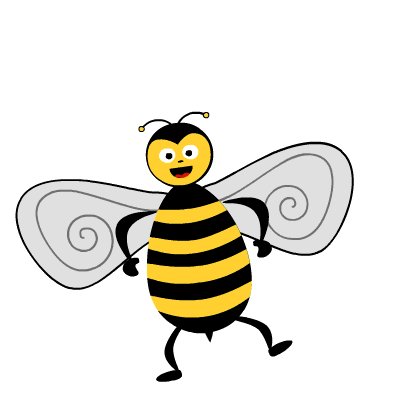The bees in a colony will swarm when the hive becomes overcrowded. A group of bees will leave the hive to find a new location, while another group stays behind. The bees that are looking for a new location will send out scouts to find potential sites. The scouts will communicate the location and quality of a site to the other bees by performing a dance. The bees will then choose the best location based on the dances of the scouts.
If there is one thing that honey bees are possessive about, it’s their home. Just standing near a honeycomb could earn you 2-3 stings, courtesy of the bees.
However, tens of millions of bees each year must find a new location to build a new home. While the sight of swarming bees can be pretty scary for some people, it is a natural and wonderful part of the life cycle of honey bees.
When a honeybee hive becomes overcrowded, the hive generally splits in two and one group must find a new site. The mother queen and approximately half the worker bees leave the parental nest to establish a new colony, while a newly reared daughter queen and the remaining workers stay behind to look after the old colony. Nest-site selection by honeybee swarms is a highly distributed decision-making process that usually occurs in the spring when a colony outgrows its hive and divides itself by swarming.

Until they find a comfortable and spacious hollow tree to call home, the thousands of bees wait in a tree branch while a few hundred scouts explore new prospects. Each scout bee returns to the group and pitches an idea of how good a particular location is by performing a unique dance known as a “waggle” dance. This dance has a code that indicates the site’s location. Based on the relative vigor of their dance, the bees shortlist the location and estimate which of the more strongly recommended locations should be the site of their new home.
Also Read: What Happens To Bees When They Get Lost?

If two nests are equally appealing, the bees risk a deadly tiebreaker. After all, the swarm has only one queen bee, so it can’t split up and must agree on a single nest site. Bee biologist Thomas Seeley of Cornell University, along with his colleagues, experimented to determine how those particular stalemates are broken. To measure this, they set up two identical boxes on a remote island and then released a swarm of bees. The researchers then observed how they selected the site. The scouts waggled for their sites but took time out from their dancing to disrupt other bees from completing their performance by head-butting them and emitting high-pitched beeps.

Such inhibitory signals help t0 break the deadlock and help the bees choose their home faster. As soon as one site gains even the slightest edge over the other, there will be more bees on the winning nest side to stop the other side’s waggling, thus accelerating the inequality and allowing the bees to choose a site more quickly. Ideally, the new home should be a cavity in a tree, well above the ground, with lots of space for the whole swarm and for storing honey. Once the bees select their location, they don’t move.
Also Read: How Do Bees Find Their Way Back To The Hive?
This is a brilliant example of the smooth functioning of bees. It is like a well-oiled machine. Perhaps if humans were as disciplined as honey bees, the Earth would be a utopia!
How well do you understand the article above!

References (click to expand)
- Swarming (honey bee) - Wikipedia. Wikipedia
- Janson, S., Middendorf, M., & Beekman, M. (2006, December 20). Searching for a new home--scouting behavior of honeybee swarms. Behavioral Ecology. Oxford University Press (OUP).
- How Bees Choose Home | The Scientist Magazine®. The Scientist
- Head Butts & Waggle Dances: How Honeybees Make Decisions. Live Science
